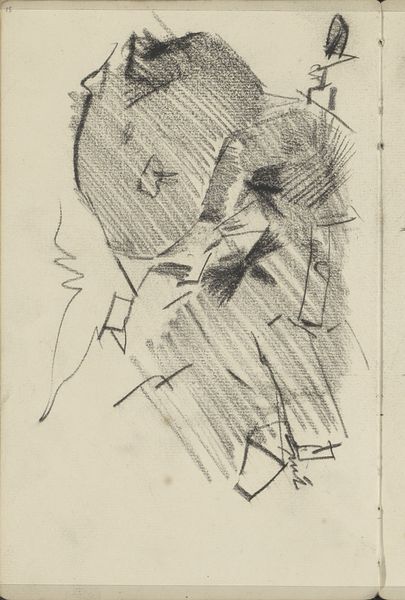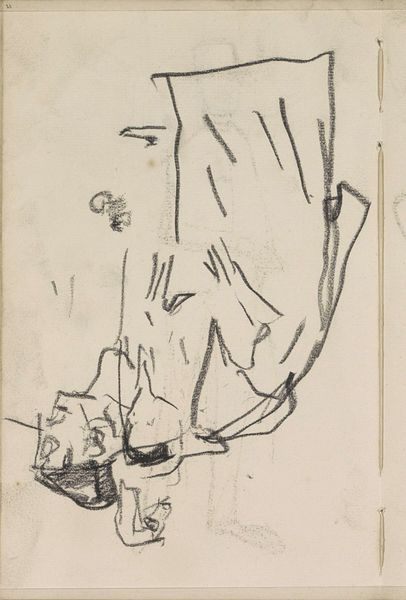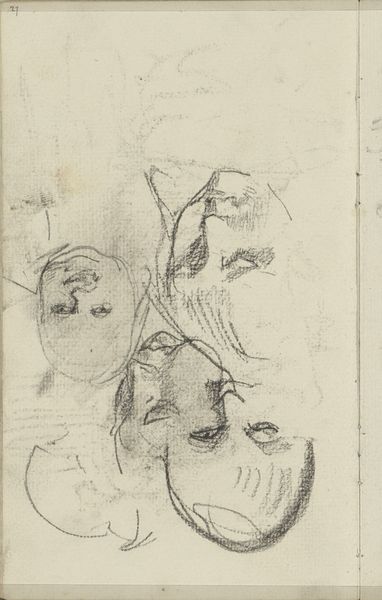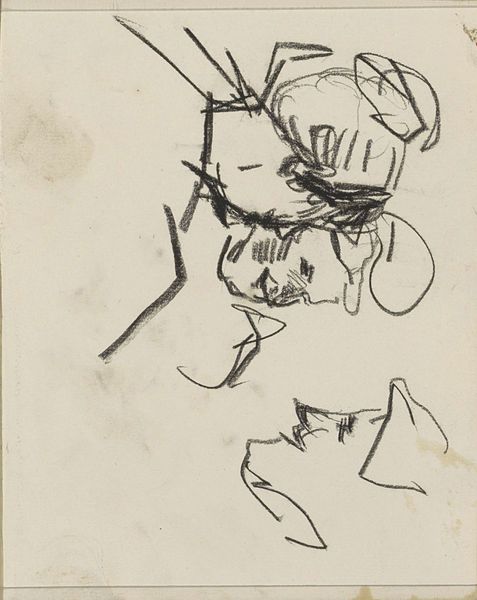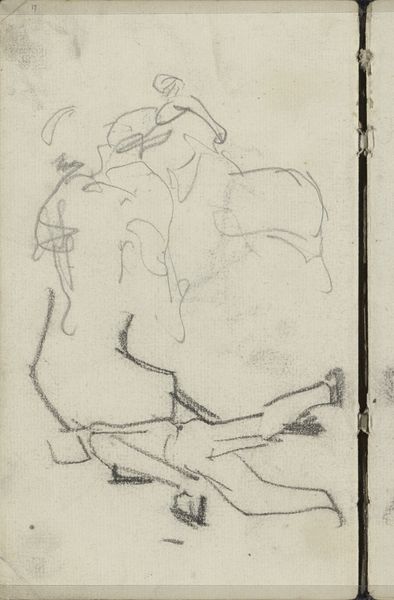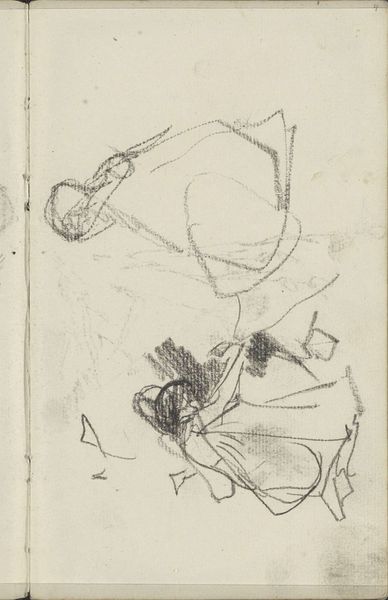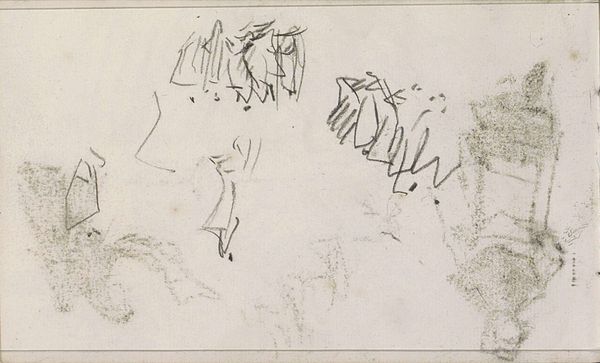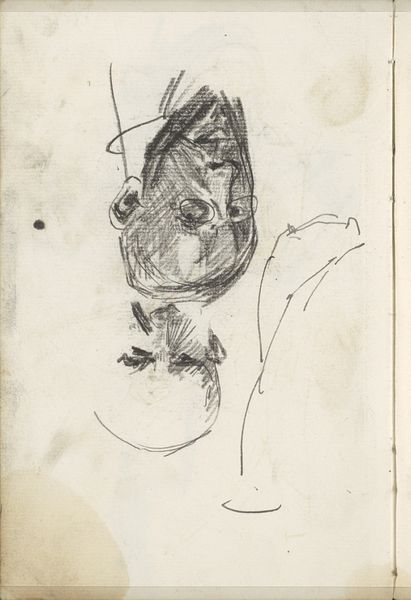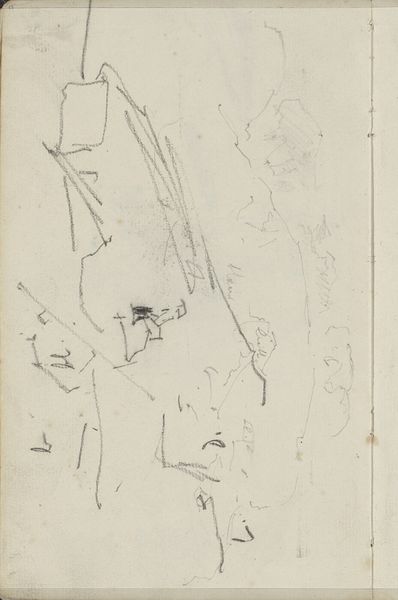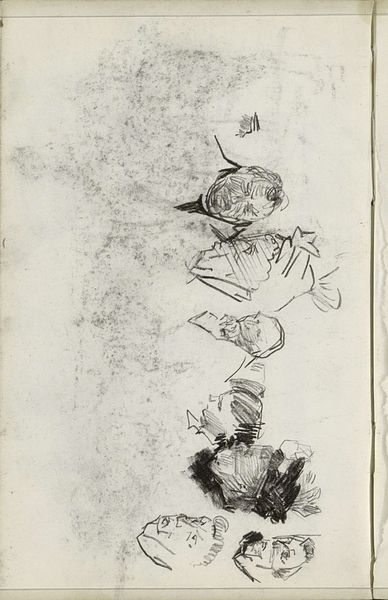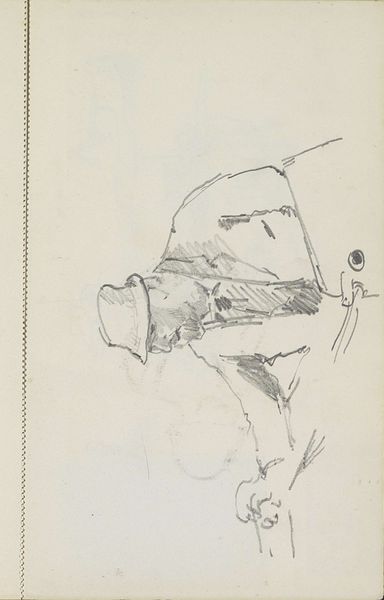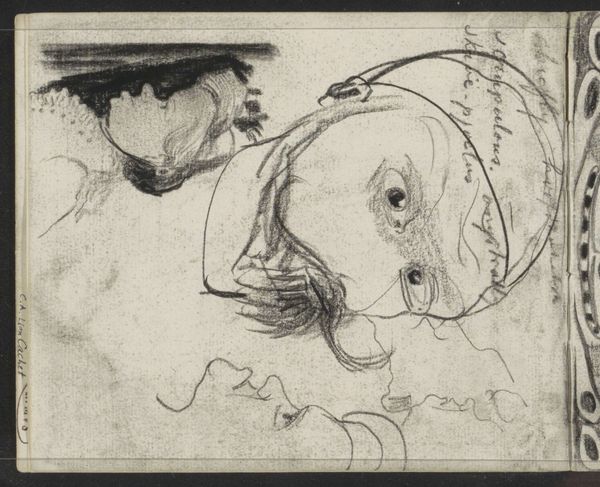
Copyright: Rijks Museum: Open Domain
Editor: Here we have Isaac Israels's pencil drawing "Two Young Women," created sometime between 1875 and 1934 and held at the Rijksmuseum. The figures are very loosely sketched; it feels incomplete, almost ephemeral. What do you see in this piece beyond just an unfinished study? Curator: Well, looking at this sketch through a historical lens, it's interesting to consider Israels’ position within the Dutch Impressionist movement and the art market of that time. Sketches like these were not always intended for public display, yet here it is, presented in a major museum. What does it tell us about how the art world has evolved? Editor: That's a good point! We are seeing something that likely wasn't intended for the public, in public. What does that suggest about the increasing value placed on the artist's process? Curator: Precisely. It hints at a shift from solely valuing finished, polished works to appreciating the artistic process itself. These 'behind the scenes' glimpses, through sketches or incomplete pieces, offer insight into the artist's choices. And notice how the women are depicted without specific detail. Does this impersonal approach resonate with wider social dynamics or ways in which women were often presented, especially in public life? Editor: It's interesting how the lack of detail could almost be interpreted as a commentary on the societal pressures of women to conform, even subtly. So, you're suggesting the sketch, by its very nature and presentation, engages with social and historical narratives around art and representation? Curator: Absolutely! The image, initially seeming simple, sparks broader inquiries about the evolving role of museums and the value placed on various stages of art creation and public presentation. Editor: That completely changes how I see it. I'll never look at a sketch the same way again. Thanks! Curator: My pleasure. Seeing art in its historical context allows us to engage more deeply with its meaning and implications.
Comments
No comments
Be the first to comment and join the conversation on the ultimate creative platform.
